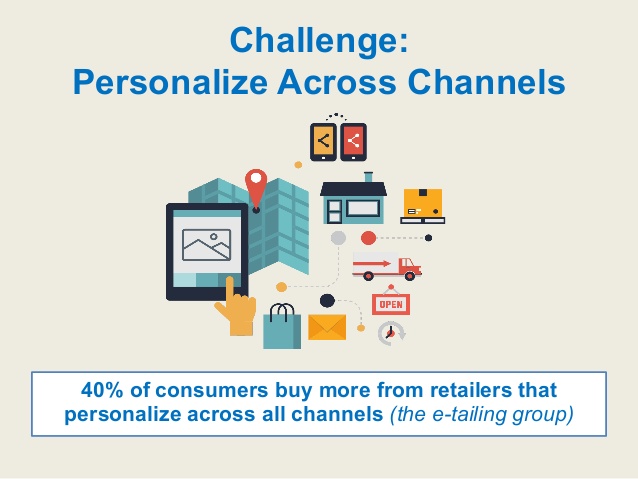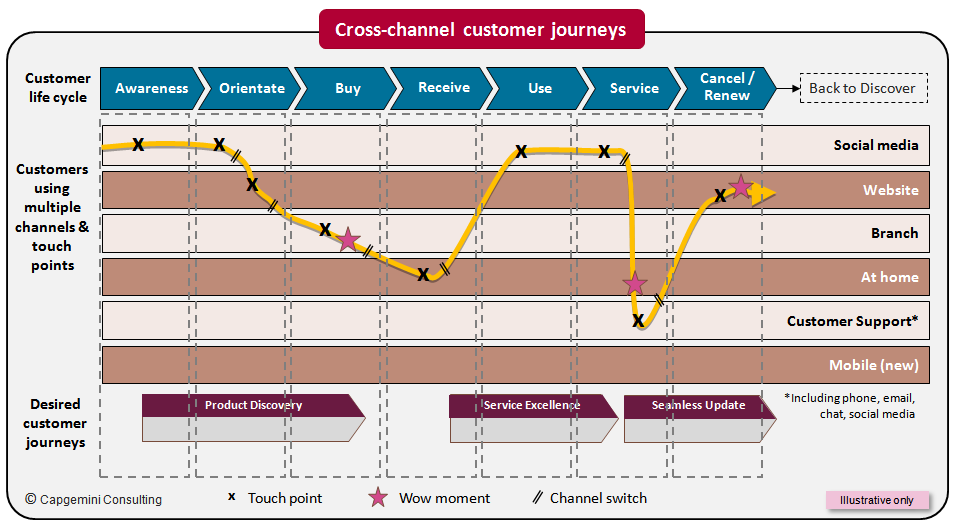Technology has changed the way most people do their jobs.
That includes marketers, too.
The digital age has drastically altered the speed, relevancy, and range of marketing campaigns. This has forced marketers everywhere to become more tech savvy as they concentrate their efforts on connecting with consumers in the vast world of the internet.
Analyzing and utilizing customer data through CRM platforms or creating content with Search Engine Optimization in mind are just some of the examples of ways marketers use technology, but being tech savvy means more than just knowing how to use an application.
As Marketing Technology (Mar Tech) guru Scott Brinker points out, “Marketing technology is not just about making existing processes more efficient. It […] will shape the experience you deliver to prospects and customers.”
Challenges Facing Today’s Marketers
Modern marketers may have adapted somewhat to the realities of today’s world, but they are still confronted with a host of challenges resulting from the rapid rise of technology.
Marketing is Coming Up Short
A Chief Marketing Officer (CMO) Council report, “Predicting Routes to Revenue”, released recently revealed some disturbing information.
Of the more than 150 marketing executives in Europe and North America who were surveyed, a mere 5% indicated that they felt able to predict customer journey and identify which actions will provide maximum value.
What does this mean?
It means that despite having already implemented many digital solutions, marketers still do not fully understand how to harness marketing technology to get greater insights into the customers they are targeting, and turn that knowledge into actionable points for generating greater revenue.
Not Enough Emphasis on Customer Experience
At the recent Consumer Electronics Show in Las Vegas, a third of those executives in attendance mentioned customer experience as the main way they hoped to make their companies stand out. Forbes reports that by 2020, customer experience will outpace pricing and product as the key factor in differentiating businesses.
This clearly points to a move away from pushing standalone messages extolling the virtues of a product or service, which has long been the staple of marketing campaigns. Because the average consumer now has access to such a vast wealth of information on the internet and can analyze a product’s specs without any help, it becomes pointless to try and target him or her this way.
In this sense, marketers are tech-savvy, or at least “tech-aware” enough to understand this, but that’s not enough.
In order for marketers to maximize the effect of a quality customer experience, they need to better understand how to build it with a true focus on the customer and not just the company. This means taking a consumer-centered approach to writing copy for email campaigns as well as designing websites and landing pages.
Falling Short on Personalization
To many marketers, the idea of creating a customer experience revolves primarily around making their message more personalized – think an email with your name in the subject line or an e-commerce site that remembers your previous purchases and suggests similar items on future visits.

Yet it is not quite so simple. CMO Council Vice President of Marketing Liz Miller concurs when commenting on her organization’s report: “Personalization isn’t a question of using a customer’s name in an email subject line. […] If [it] remains a way to add a few interesting indicators to a momentary campaign, we will fail in fully optimizing the revenue potential of each individual customer.”
Creating a truly personalized customer experience involves treating the customer as a living, breathing, multi-faceted human being – in other words, treat them as the person they really are, not just a name on a list.
More and more consumers are expecting to be engaged, especially those in younger age brackets. This should come as no surprise, as younger consumers’ medium of choice, the internet, allows for much more participation and engagement than television, the medium of their parent’s generation.
This presents quite a challenge for modern marketers, and it is forcing them to turn to more advanced technical solutions
This challenge can be overcome by utilizing technology platforms that help create and deliver personalized messages to individual users. Some of the these tools include Data Management Platforms (DMP), analytics tools that provide user-centric reporting, and personalized remarketing platforms.
Marketing in a Multi-Channel, Multi-Device World
One thing that makes it difficult for marketers to create effective campaigns built around dynamic customer experiences is the wide range of digital channels through which they may engage with potential customers. These channels may include:the company homepagesocial media ad campaignsemails with special offers or announcementsdisplay ads placed on related applications/websiteslanding pages optimized for native searches
Add to that the growing list of internet-enabled devices people use to access these channels:home computerswork computerssmartphonestabletssmart TVsgaming consoles

All of these different possibilities would seem to be a good thing. Instead, it more often leaves marketers blind to customer journeys and ultimately leads to the uncertainty about customer behavior and best actions for revenue generation highlighted in the CMO Council survey.
This problem can be seen in the way some marketers push the same content across several different channels – for instance, using the same text and images for a banner advertisement on a web page and a Twitter post.
It also shows up when marketers fail to correctly segment their audience, for example knowing which percentage of customers to target with premium, more expensive goods or services, and which group is more likely to respond to less expensive options.
In short, marketers can end up treating consumers like objects instead of the human beings they really are.
Humans are influenced by a whole range of factors. Their preferences, interests, and behaviors can change, to greater or lesser degree, depending on a whole range of factors:time of day or season of the yeardevice being usedgeographic locationrecent browsing historyprevious interaction with the brand
Because marketers fail to take these various factors into consideration, much less track and quantify this information in a systematic way, they end up missing out on potential revenue.
In order for marketers to reach their target audience across multiple channels and multiple devices, they need to start using technology platforms (e.g. a data management platform) to help create a Single Customer View (SCV). A SCV allows marketers to better identify and understand their customers on an individual level, track them across multiple channels and devices, and ultimately, deliver more relevant and engaging marketing messages.
Lack of Data Aggregation and Alignment
One problem most marketers don’t have is a lack of data. Companies and organizations are good at gathering information from a variety of sources, but the challenge is utilizing the data.
In fact, it is what sets truly successful brands apart from mediocre ones, as Marc de Swaan Arons and company point out in their piece for The Harvard Business Review. Companies that are dealing with big data in a big way are doing so to not only understand what consumers are doing or have done in the past, but why they are doing it, which makes predicting revenue sources much easier.
Liz Miller adds, “Personalizing the customer experience demands that we harness the data that is collected across the organization and immediately transform that into something that is actionable and resonates with the customer and their preferences.”
So far that hasn’t happened.
Only 3% of those surveyed for the CMO council report felt their organization has properly aligned and integrated their data sources.
In many organizations, information from a variety of sources both online and offline remains siloed – that is, separated across different applications used for different purposes (CRM platforms, email generators, web analytics platforms) and often controlled by different departments (sales, marketing, customer service etc.)
Without better data integration, alignment, and a more-than-basic understanding of how to utilize data, marketers will remain severely handicapped.
Technology Platforms to Help Marketers Succeed
Dealing with the challenges mentioned above has pushed CMOs everywhere to invest more heavily in a variety of tech platforms. Indeed, it is predicted they will soon spend more on IT than Chief Information Officers (CIO), which only highlights how technology has become more and more influential in the marketing industry.
Already marketers have been utilizing a range of technology platforms for a variety of needs. These include:Analytics tools: Track web traffic and user interactions to analyze campaign effectiveness, user pathways, and conversion rates.
- Customer Relations Management (CRM) platforms: Track and manage communication and interactions between sales departments and potential customers.
- Marketing automation tools: Allow marketers to automatically send email campaigns, create and manage funnels, and track leads.
- Tag managers: Organize and utilize tags for tracking online user actions.
- Yet for all the functionality provided by these platforms, the marketers of tomorrow will need to turn to another type of tech platform to effectively deal with the aforementioned challenges.
Data Management Platforms to the Rescue
Data management platforms (DMP) have a wide variety of uses for advertisers and marketers, but their main attribute is to collect, aggregate, and segment masses of data, making the information easily accessible and usable.
How exactly can a DMP help marketers?
First of all, it collects and aggregates data from all across an organization. This can include:Online data
Information from CRM platforms, web analytics platforms, web and mobile apps, tag management systems, ad servers, help-desk software, social media accountsOffline data
Contact details collected personally, in-store purchase information
One result of this aggregation is that a DMP can help create a Single-Customer View (SCV). By tracking users across a range of channels, using cookie syncing and tags built into applications and websites, it is possible to get a clearer picture of customers behavior and preferences. This is invaluable in helping marketers better understand consumers and create a more effective customer experience.
Once the data is collected, a DMP allows its users to segment the data to create categories also known as audiences. By breaking down their range of possible customers according to a group of factors, marketers can get a quick and accurate idea of how to craft their campaigns.
Consider a marketer for mobile gaming apps. Thanks to the information collected and stored by a DMP, the marketer would know that certain consumers:had searched for reviews of games on a desktop computerhad purchased several apps on a tablethas recently deleted two of the apps from the tablet
Having identified these customers thanks to an audience that takes into consideration the price range of the apps purchased, the interests indicated by the search results from the desktop web browser and the apps that have been deleted, a marketer might craft a personalized message.
As Robert Tas, CMO of Pegasystems, reiterates, “By deploying real-time analytics to turn […] data into actionable insights, organizations can predict customers needs and quickly adjust as those needs change to provide superior experiences at every action.”
This is what it means to truly harness the power of technology for the marketing industry.
Extracts from this article appeared on www.momentology.com








